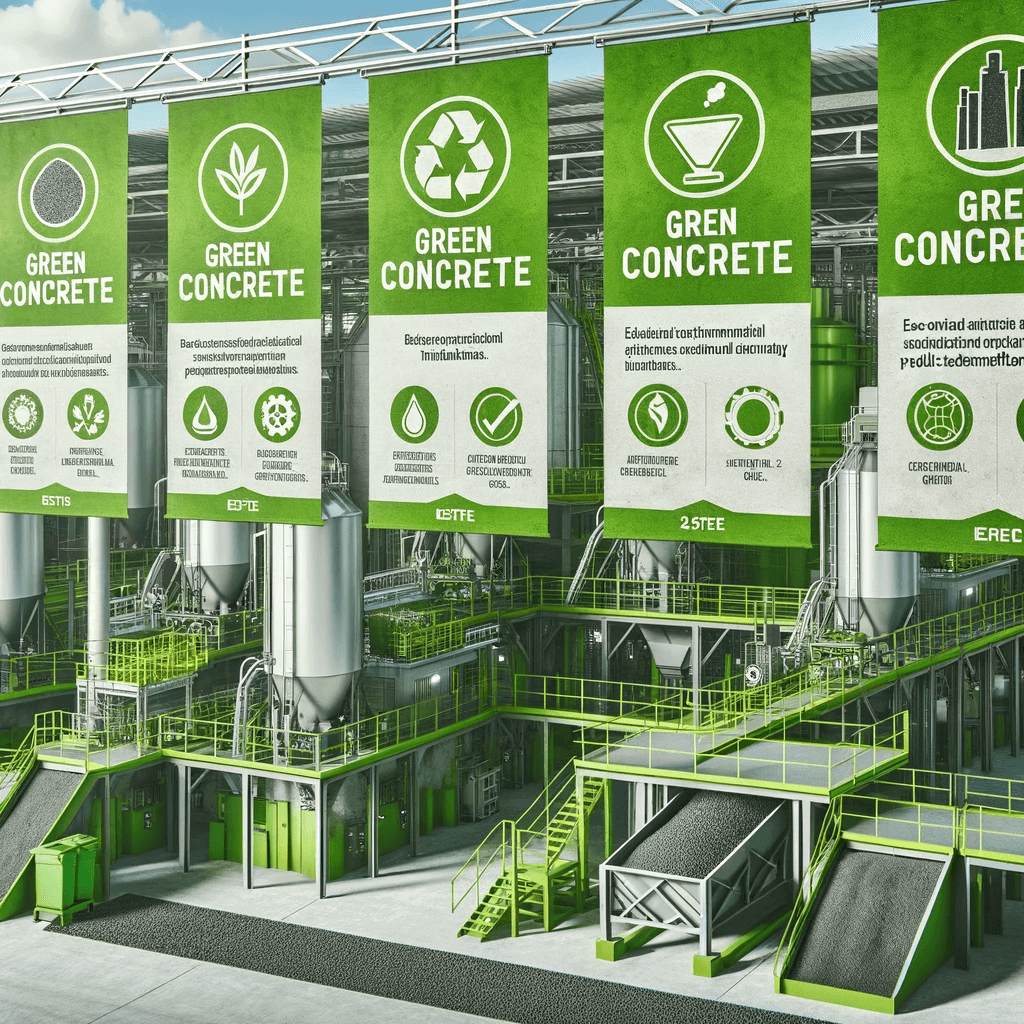
Concrete: The Quest for Greener Alternatives
In the heart of every sprawling metropolis lies a silent companion to humanity’s architectural endeavors — concrete. From the towering skyscrapers to the humble sidewalks, the presence of concrete is as ubiquitous as the air we breathe. Yet, beyond its stony demeanor lies a tale of an unyielding quest for harmony with nature.
The narrative of concrete dates back to the ancient tapestry of human civilization. Its genesis was penned by the Romans who, with a blend of volcanic ash, lime, and water, crafted a version of this enduring material. The remnants of the Roman Pantheon and aqueducts stand today as stoic testimonials to concrete’s enduring embrace.
Yet, as the hands of time ceaselessly ticked, the narrative of concrete was destined for a modern renaissance. The industrial age of the 19th century heralded a monumental chapter with the invention of Portland cement. This newfound concoction not only refined the consistency of concrete but also laid the cornerstone for mass production. Painting urban skylines with towering concrete edifices.
The Modern-day Chronicle
In the modern architectural lexicon, concrete has etched a reputation of reliability, versatility, and economic prudence. Its mighty form graces the spine of myriad infrastructural marvels, from towering buildings and spanning bridges to robust dams and endless highways. The global demand for concrete is shadowed only by the ubiquitous necessity for water, underlining its pivotal role in scripting the urban landscape. However, beneath the stoic gray lies a carbon narrative that is not as steadfast.
The Carbon Dilemma: Unveiling the ‘Embodied Carbon’
The term ’embodied carbon’ is akin to the unseen shadow of concrete, encapsulating the greenhouse gas emissions entwined in its lifecycle journey. From the cradle of raw material extraction to the grave of manufacturing and transportation. The carbon footprint of concrete is a stark reality.
The heart of concrete, cement, is the prodigal son in this carbon narrative. The metamorphosis of limestone at high temperatures, a crucial chapter in cement production, pens a significant portion of global carbon dioxide emissions. This unseen carbon silhouette is a stark contradiction to the visible stoic gray facade of concrete.
Environmental Compass: Navigating with EPDs
As the quest for a greener narrative intensifies, the compass of Environmental Product Declarations (EPDs) emerges as a beacon of hope. EPDs to building materials are what nutritional labels are to food. Offering a transparent glimpse into the environmental narrative from cradle to grave. They unveil the Global Warming Potential (GWP) of concrete, providing a clear picture of the greenhouse gas emissions scripted throughout its lifecycle.
The lens of EPDs reveals that a significant chapter of concrete’s GWP is inked during the production phase. Primarily due to the limestone calcination saga in cement production. This transparency empowers stakeholders, from manufacturers and policymakers to consumers, to script a knowledgeable path forward. Through the lens of EPDs, they can identify reduction avenues, opt for lower-impact materials, and significantly trim the carbon silhouette of construction endeavors.
Legislative Landscapes
In the modern narrative, legislations are scripting pivotal chapters towards reducing the embodied carbon of construction materials, including concrete. The Federal Buy Clean Initiative and California’s Buy Clean Act are monumental scripts in this narrative. Setting a precedent for transparency and accountability in the construction sector.
The California Whole Building Embodied Carbon policy is a pioneering act in this domain. Nudging manufacturers towards acquiring EPDs for a transparent showcase of the global warming potential of their offerings. This legislative narrative is inspiring other states to ink their versions of Buy Clean Acts, embarking on a collective quest for a lower carbon construction realm.
- California Whole Building Embodied Carbon Policy
- Federal Buy Clean Initiative
- Buy Clean California Act
- Buy Clean Colorado legislation
- New York City Executive Order 23
- CHPS
- LEED
Concrete: The Quest for Greener Alternatives
The relentless quest for eco-friendly alternatives to concrete is a promising horizon in the construction realm. The narrative is adorned with innovative chapters like:
- Low-Carbon Cement: Craft cements with a reduced carbon narrative, exploring alternative ingredients or carbon capture technologies.
- Recycled Aggregates: With concrete mixes that swap virgin materials for recycled aggregates, reducing the demand for mining and lowering the environmental impact.
- Innovative Mix Designs: Concrete mix designs that demand less cement yet stand strong, significantly trimming the embodied carbon.
- Carbon Offsetting: Investments in carbon offset endeavors to balance the emissions tied to concrete production.
The green quest has also birthed innovative materials like Fly Ash Concrete, Hempcrete, and Engineered Wood. Each narrating a tale of reduced carbon footprint and echoing the ethos of sustainability.
The Road Ahead — Fusing Strength with Sustainability
Concrete, the stoic companion of modern construction, is at a crossroad. The journey ahead is about crafting a harmonious narrative between might and eco-consciousness. By nurturing innovative technologies, unearthing greener materials, and engraving sustainability in construction practices, the realm is embarking on a quest where concrete’s legacy continues with a lighter carbon imprint.
As the quest for sustainable construction practices intensifies, the narrative of concrete is poised for an evolution. The horizon is promising, possibly heralding a green concrete revolution where strength harmonizes with green ideals. The chronicle of concrete is far from over; it’s a relentless quest for greener alternatives, an endeavor to script a sustainable legacy for the concrete of tomorrow.
